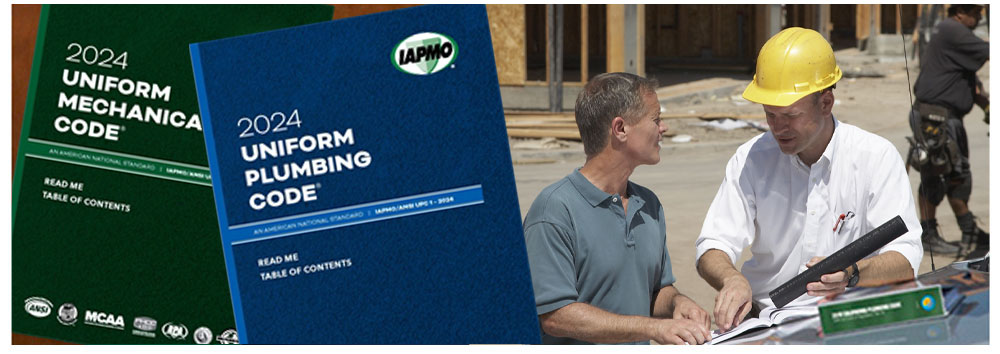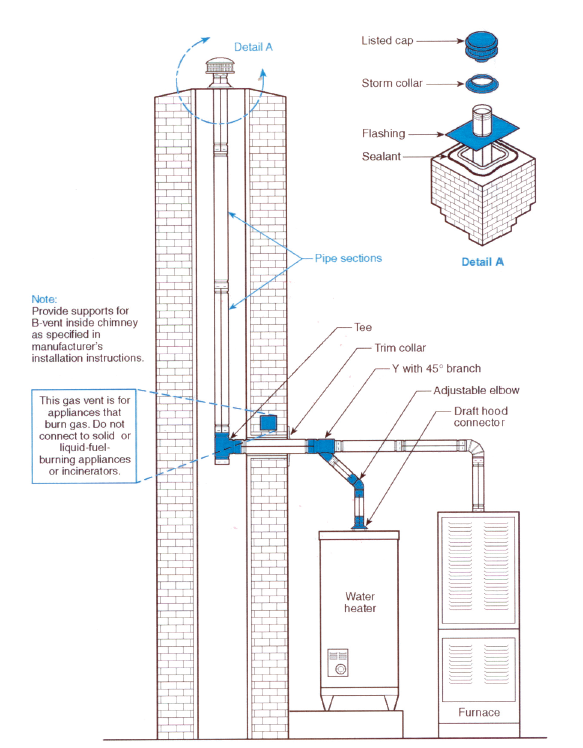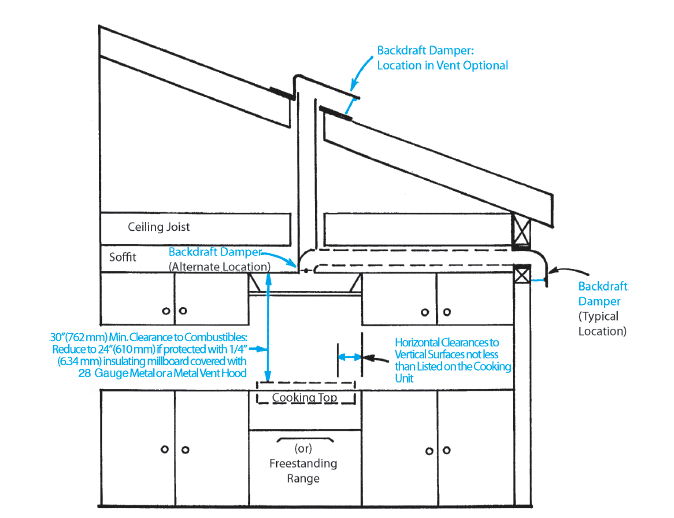May 2, 2024

From the 2024 UPC Illustrated Training Manual, Chapter 5 – WATER HEATERS
509.5.2 Metal Chimneys. Metal chimneys shall be built and installed in accordance with NFPA 211. [NFPA 54:12.6.1.2]
Metal chimneys are field-constructed chimneys made of sheet steel and intended for industrial applications. These chimneys differ greatly from factory-built chimneys in that they are made of metal. The term “metal chimneys” is sometimes misapplied to describe factory-built chimneys. The construction and installation of metal chimneys is covered in NFPA 211, Standard for Chimneys, Fireplaces, Vents and Solid Fuel-Burning Appliances, which prohibits the installation of metal chimneys in residential structures.
509.5.3 Masonry Chimneys. Masonry chimneys shall be built and installed in accordance with NFPA 211 and lined with one of the following:
(1) Approved clay flue lining
(2) A chimney lining system listed and labeled in accordance with UL 1777
(3) Other approved material that resists corrosion, erosion, softening, or cracking from vent gases at temperatures up to 1800°F (982°C)
Masonry chimneys can be used for all appliances permitted in Section 509.4 that can be vented using chimneys. The exception to Section 509.5.3 permits installation of liners in masonry chimneys that may not be covered in NFPA 211. The labeling requirement notifies future installers of the vent liner’s limitations. Notification is important if a change in appliance fuels is considered (see Figure 509.5.3).

TYPICAL INSTALLATION USING TYPE B VENT TO LINE MASONRY CHIMNEY
From the 2024 UMC Illustrated Training Manual, Chapter 9 – INSTALLATION OF SPECIFIC APPLIANCES
919.5.2 Vertical Clearance Above Cooking Top. Builtin top (or surface) cooking appliances shall have a vertical clearance above the cooking top of not less than 30 inches (762 mm) to combustible material or metal cabinets. A clearance of not less than 24 inches (610 mm) is permitted where one of the following is installed:
(1) The underside of the combustible material or metal cabinet above the cooking top is protected with not less than 1⁄4 of an inch (6.4 mm) insulating millboard covered with sheet metal not less than 0.0122 of an inch (0.3099 mm) thick.
(2) A metal ventilating hood of sheet metal not less than 0.0122 of an inch (0.3099 mm) thick is installed above the cooking top with a clearance of not less than 1⁄4 of an inch (6.4 mm) between the hood and the underside of the combustible material or metal cabinet, and the hood not less than the width of the appliance and is centered over the appliance.
(3) A listed cooking appliance or microwave oven installed over a listed cooking appliance shall be in accordance with the terms of the upper appliance’s listing and the manufacturer’s installation instructions. Microwave ovens shall comply with UL 923.
A domestic range or cooktop requires a minimum vertical clearance to combustibles of 30 inches (see Figure 919.5.2). This vertical distance may be reduced to 24 inches if the under-cabinet space is protected with an approved method. Even if cabinets are constructed of steel or other noncombustible material, reduced clearances are to be considered cautiously. The contents of the cupboard and/or the packaging material could be ignited by intense heat.

KITCHEN RANGE HOOD AND DUCT
(This is not to be considered the official position of IAPMO, nor is it an official interpretation of the Codes.)

IAPMO
IAPMO develops and publishes the Uniform Plumbing Code®,the most widely recognized code of practice used by the plumbing industry worldwide; Uniform Mechanical Code®; Uniform Swimming Pool, Spa and Hot Tub Code®; and Uniform Solar Energy, Hydronics and Geothermal Code™ — the only plumbing, mechanical, solar energy and swimming pool codes designated by ANSI as American National Standards — and the Water Efficiency Standard (WE-Stand)™. IAPMO works with government, contractors, labor force, and manufacturers to produce product standards, technical manuals, personnel certification/educational programs and additional resources in order to meet the ever-evolving demands of the industry in protecting public health and safety.
Last modified: May 2, 2024
